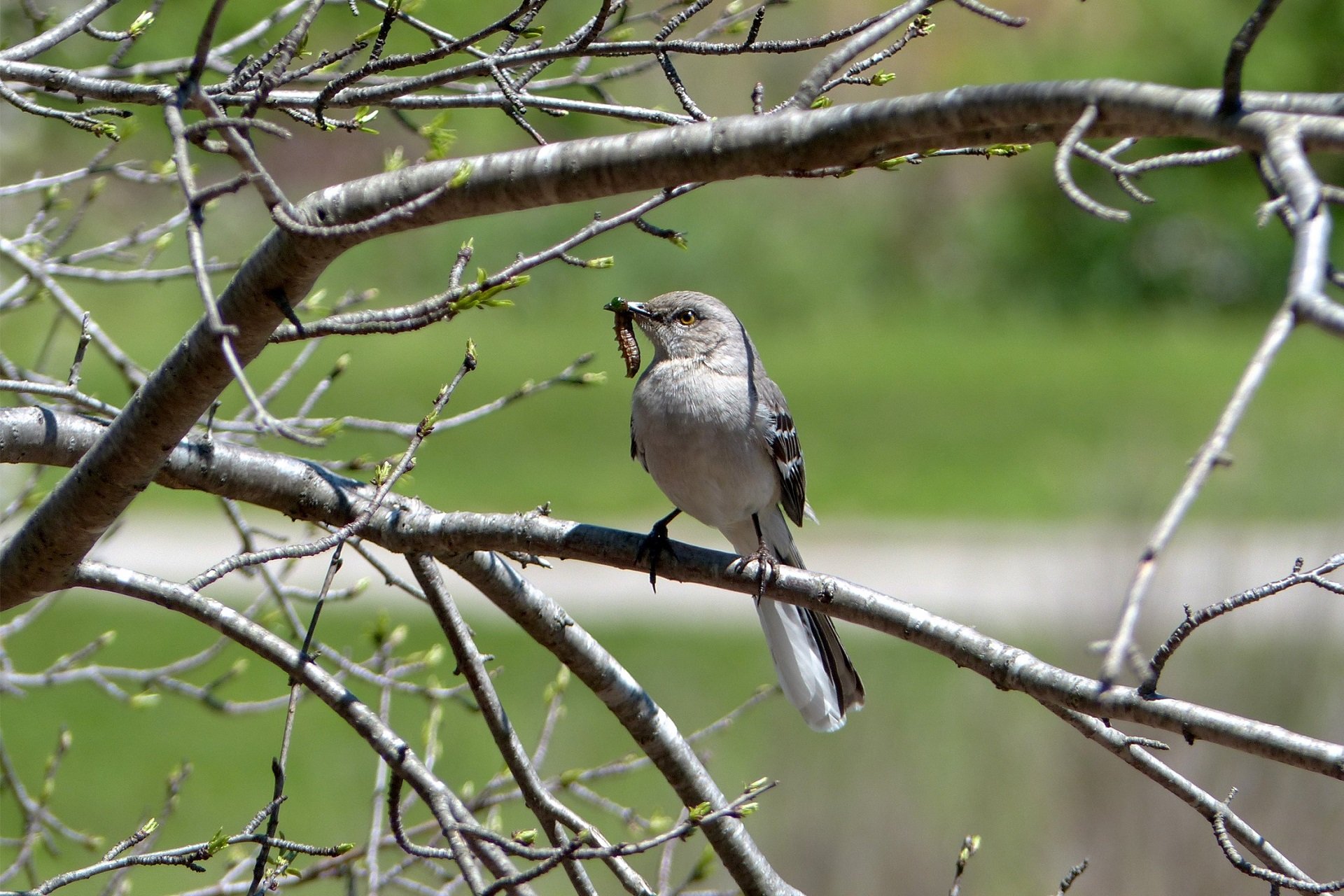Aggressive Birds
Nearly all birds will display aggressive behavior when they perceive a threat to their nest or young. Birds that nest in close proximity to people; the Northern Mockingbird, American Robin, Gray Catbird, and Blue Jay, are the most frequent assailants, and the mockingbird is without a doubt the most zealous—harassing, people, domestic animals, and other birds.
Terns, gulls, Northern Goshawks, Red-tailed and Broad-winged hawks, and Peregrine Falcons also attempt to intimidate intruders that trespass into their nesting territory.
Signs of Aggression
Defensive behavior toward people can take the form of loud vocalizations, feigning injury, or pursuing or attacking the intruder. The vigor with which a bird defends its territory depends on the species.
Time Period
Birds are most aggressive towards humans during the nestling period (the interval between hatching and the young bird's departure from the nest), a span of about two weeks in common backyard nesters. Some birds (e.g., robins, mockingbirds, cardinals) can produce two or three broods a season; as a result, their defensive behavior may occur in the spring and again in mid- to late summer.
Mockingbirds also display territorial behavior in fall and winter when they are protecting a source of food such as a bush laden with berries. If there are bird feeders within a mockingbird's feeding territory, other birds will be driven off, even though the mockingbird has no interest in the food offered at the feeder.
What You Can Do
When being harassed by a mockingbird, robin, catbird, or jay, patience and understanding are the best options. Remember, the behavior will last only as long as the young are in the nest, about two weeks. There are some additional options to help avoid any situation:
- If possible, stay out of the area of the nest. Use another door, move lawn furniture or children's toys to a different location in the yard, etc.
- For short journeys into the bird's territory, carry an open umbrella to discourage the birds.
- For longer periods in the vicinity of a protective parent bird, use a helium-filled Mylar balloon tied to a belt or hat, and extended two or three feet above the head. The movement of the balloon will frighten the bird.
- To avoid being harassed by a bird of prey (such as a hawk) or seabird like a gull, try stay out of the area for at least six weeks, at which point the young are flying and the adults feel less threatened.
If a person or pet is actually struck and the skin is broken, the wound should be washed and treated with antiseptic. Birds do not carry rabies or other diseases communicable in this way.
Birds & the Law
Most birds are protected by federal law under the Migratory Bird Treaty Act of 1918. Learn more about birds and the law



